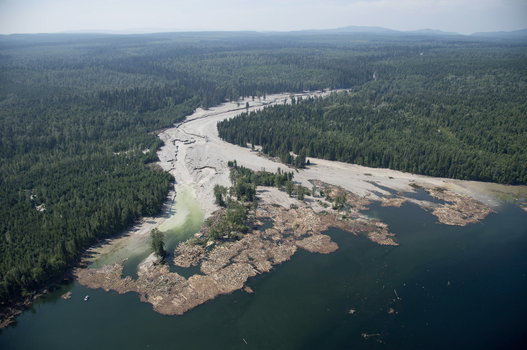
In 2014, a dam breach at Imperial Metals’ Mount Polley mine resulted in the largest mine waste disaster in Canadian history. Over 24 billion litres of solid and liquid mine waste rushed downstream into the Quesnel Lake watershed, leading to a drinking water ban and destroying kilometres of forest and fish habitats in its wake. Long-term effects of this disaster, such as contamination of lake sediments and species, are still being monitored.
More than seven years later, communities and the environment are still at risk from mine waste failures in British Columbia. The province lags behind other jurisdictions in Canada and globally in mine waste storage safety.
This was echoed by the first ever Audit of Code Requirements for Tailings Storage Facilities in 2021. While this internal B.C. government Audit includes important findings, it also contains significant limitations, raising concerns about the ongoing review of the Health, Safety and Reclamation Code for Mines in British Columbia (HSRC) and other legislation relating to waste safety and tailing storage facilities.
The BC Mining Law Reform network and MiningWatch Canada teamed up with Dr. Steven H. Emerman to analyze the Audit and make concrete recommendations on how the B.C. government and the HSRC Review Committee can bring existing laws and regulations into alignment with best practices and international standards, and strengthen its enforcement of compliance on mine waste safety to protect communities and the environment.
In order to do this, B.C. legislation must:
- prioritize safety above cost considerations in the design, construction, operation, and closure of mine waste facilities;
- require Indigenous and community consent before building, expanding, or closing facilities;
- prohibit facilities located immediately upstream from communities and sensitive ecosystems;
- prohibit the use of upstream dams, especially in high precipitation and seismic areas;
- mandate best available technologies and practices, including no surface water and the use of filtered tailings;
- design facilities to withstand the most extreme meteorological and seismic events;
- require full financial assurances for site closure and post-closure costs, as well as full financial insurance for accidental damages; and,
- require accountability, transparency, and public disclosure on mine waste risks.
